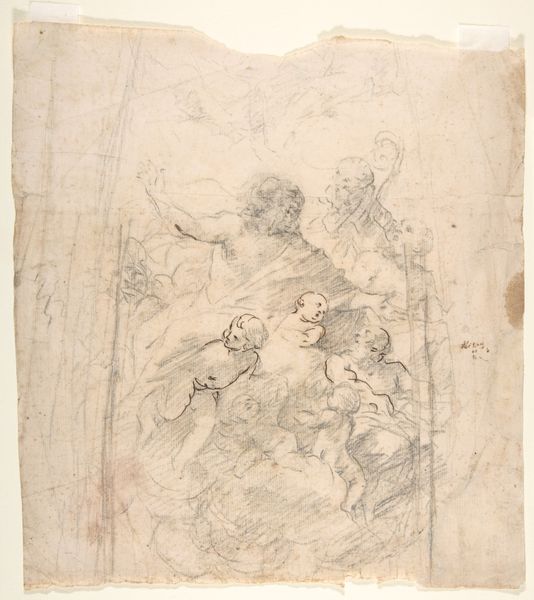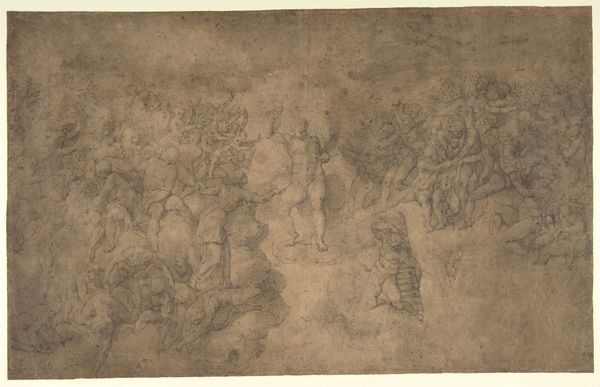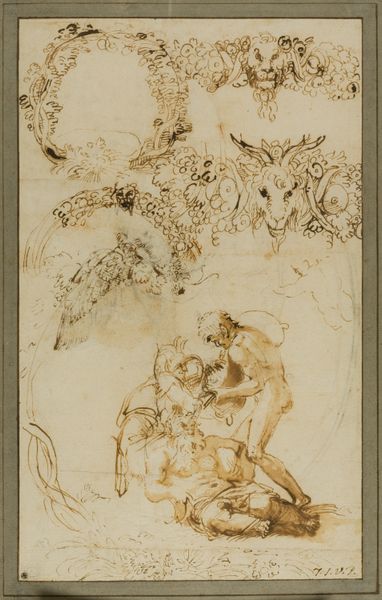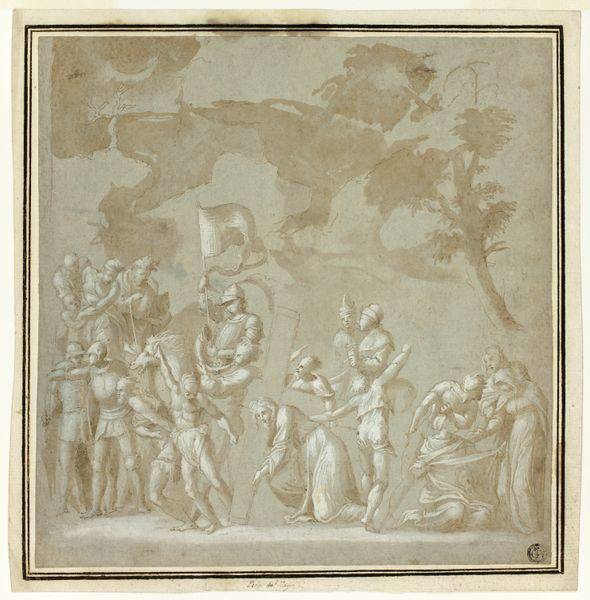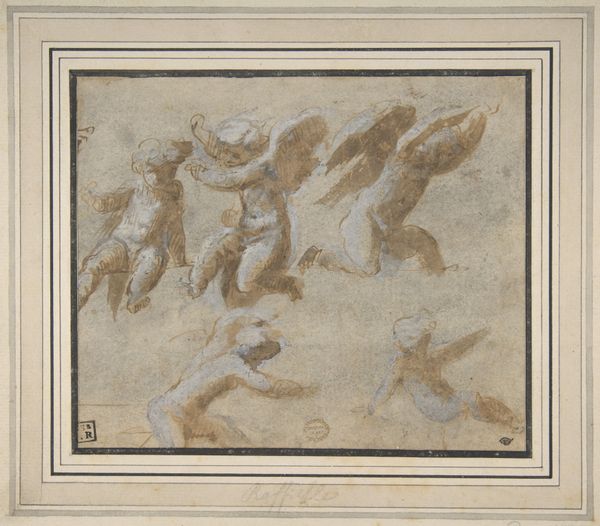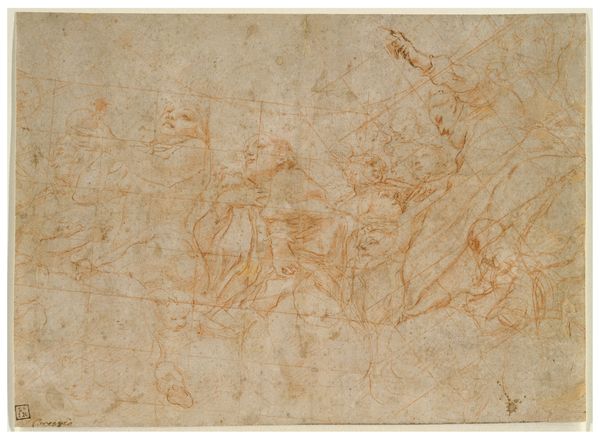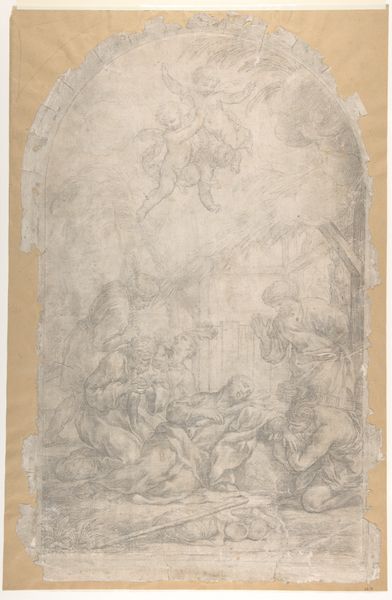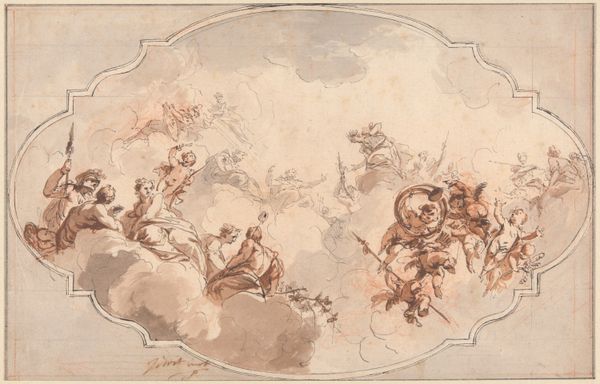
drawing
#
drawing
#
natural stone pattern
#
toned paper
#
possibly oil pastel
#
tea stained
#
stoneware
#
earthy tone
#
coffee painting
#
underpainting
#
watercolor
#
warm toned green
Dimensions: overall: 22 x 32.9 cm (8 11/16 x 12 15/16 in.)
Copyright: National Gallery of Art: CC0 1.0
Editor: This is "Various Figure Studies" by Filippino Lippi, created around 1493 to 1495. It's a drawing, seemingly on toned paper. I’m immediately drawn to the almost ghostly quality of the figures and how they're positioned within this architectural frame. What historical context informs how we should interpret a drawing like this? Curator: Drawings like this were fundamental to artistic production in the Renaissance. But they weren’t necessarily meant for public display as finished artworks. Rather, they are key to understanding the workshop practices and the collaborative dynamics of the time. Editor: So, it's more about process than presentation? Curator: Exactly! Consider who would have seen this. It likely circulated within Lippi's workshop. Other artists, assistants, and perhaps even patrons might have viewed it. Its "public" was a specific artistic circle, a crucial detail often overlooked. How does that change how you understand the figures? Editor: I suppose knowing that affects my view. Instead of a completed thought, it feels like an open conversation between the artist and his collaborators. Is it meant to showcase skill or to be studied and adapted? Curator: Both. Skill demonstration was part of artistic patronage; showing your abilities helped win commissions. But remember, artists during this period weren't solitary figures. Workshops involved hierarchy, collaboration, and knowledge-sharing. Drawings were a tool for shaping artistic language as much as developing a design. What is your final thought on how our view changes about public accessibility of art? Editor: This definitely changes my view of Renaissance art. This drawing feels less like a precious artifact and more like a vital piece of artistic dialogue from a vibrant community, normally kept private. Curator: Indeed. The very existence of this work today highlights how institutions selectively frame what constitutes 'art' and shapes art history narratives.
Comments
No comments
Be the first to comment and join the conversation on the ultimate creative platform.


